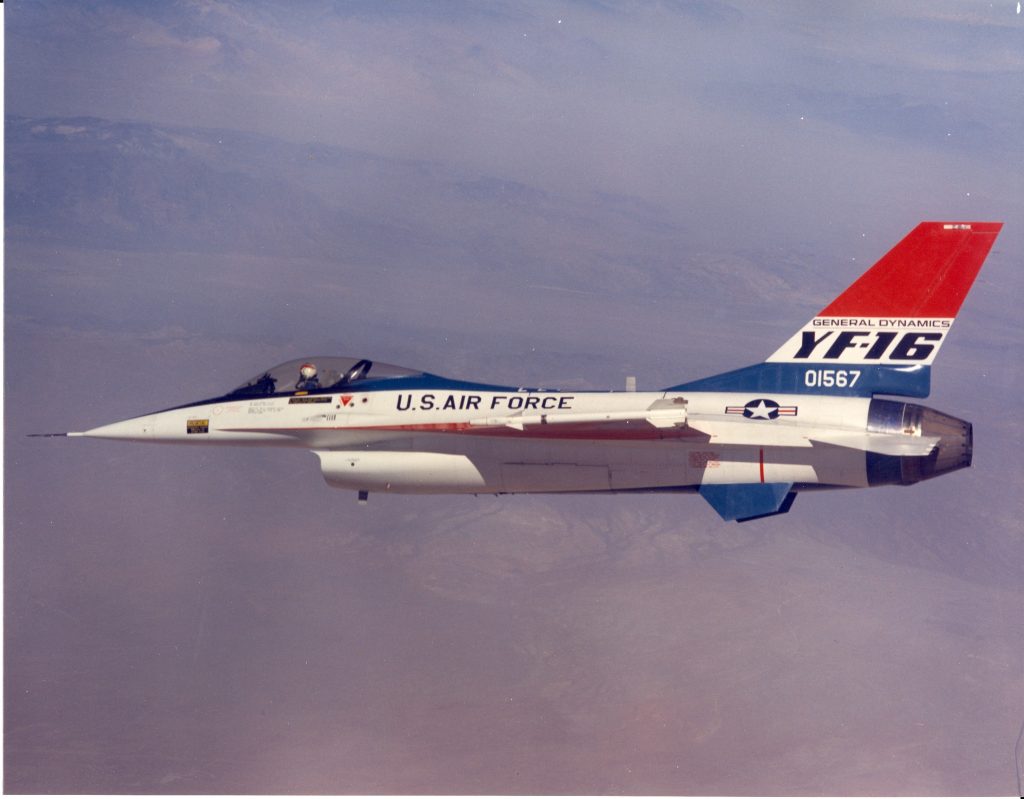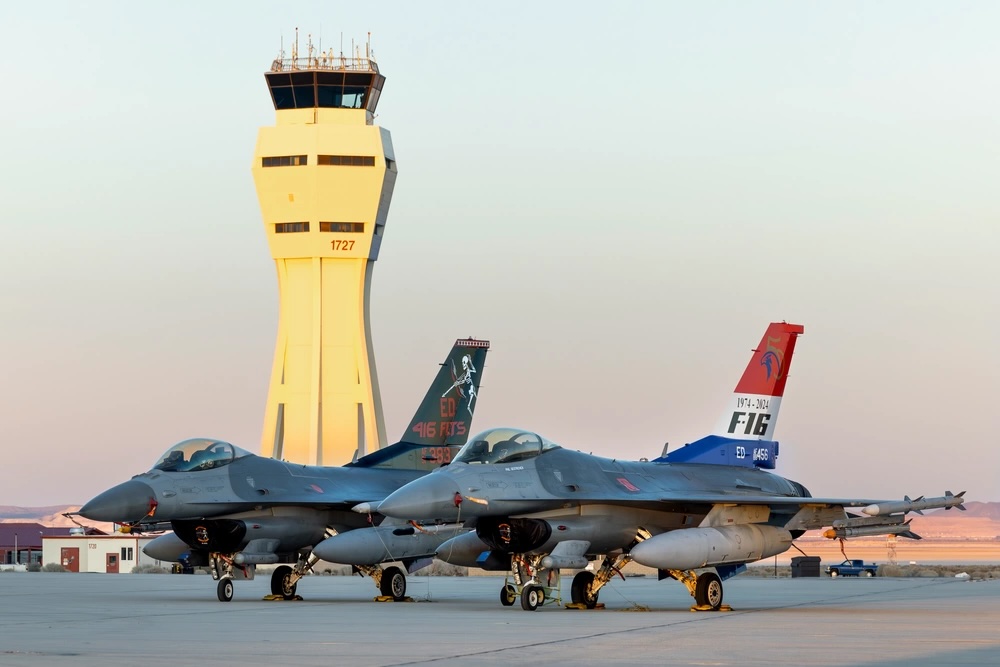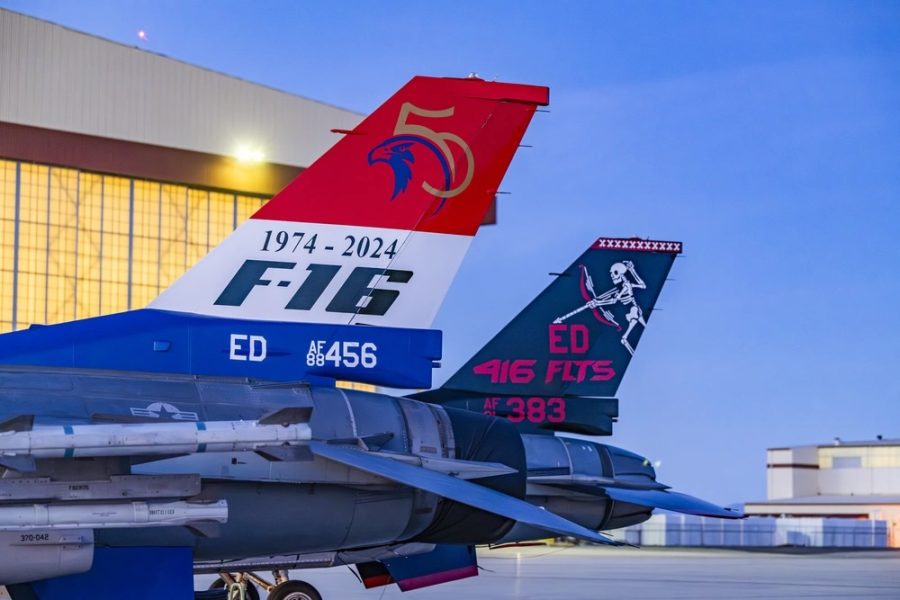Edwards Air Force Base, where the Air Force’s iconic F-16 multirole fighter jet took its accidental first flight in 1974, celebrated the 50th anniversary of the event with two commemorative tail flashes: one for the prototype YF-16 and one for the 416th Flight Test Squadron, which has performed flight testing on the jet for decades.
“These custom flashes represent the 50 year legacy of both the F-16 and the 416th FLTS team who ensure the Viper remains a dominant presence for decades to come,” the California base wrote in a Jan. 22 Facebook post.

Designed as a low-cost, lightweight fighter that could outmaneuver its rivals, what eventually became known as the F-16 took its first flight by accident on Jan. 20, 1974.
“During high-speed taxi tests the aircraft became unstable—so much that its wingtips were hitting off the runway and throwing off sparks,” Air & Space Forces Magazine wrote in 2004. “General Dynamics test pilot Phil Oestricher decided that the safest thing to do was take to the air. He did one circuit and then landed.”
The test jet, known as the YF-16, was the first aircraft with a fly-by-wire control system, where electrical wires replace the usual cables in relaying a pilot’s commands to the aircraft. The system had some kinks to work out, and the extremely sensitive controls were one of the factors that contributed to the taxi test instability. After a tune-up, the jet made its first formal flight on Feb. 2, 1974, but an investigation commended Oestricher for saving the prototype, according to the Edwards Facebook post.
In a 2012 interview with Lockheed Martin, the pilot said he had always intended “to put a little bit of daylight under the wheels, maybe a foot or two, fly it about a thousand feet down the runway, and land it, and in the meantime checking out the lateral or the roll response sensitivity.”
Over the next five decades, the F-16 has gone on to fly in the air forces of about two dozen countries, with more than 4,600 produced and about 900 serving in the U.S. Air Force today. The jet and its crews have accomplished countless missions, including airshows with the Air Force Thunderbirds, the service’s premier aerial demonstration team.
The F-16 can “satisfy an objective in the Middle East and a week later, fly [combat air patrol] over a point on the U.S., and do a homeland defense sortie,” Lt. Gen. David S. Nahom said in 2022. “It’s pretty amazing. And do that at half … [the] operating cost of any other air platform we have out there.”

Despite its age, the F-16 remains relevant with modernized radar, electronic warfare upgrades, and cockpit displays. The 416th Flight Test Squadron, also known as the Skulls, plays a large role, having tested out various weapons systems and specialized equipment for the Viper since 1989.
“Working as a flight test engineer here at the 416th is really special because you get to see how a 1970s platform has been upgraded to be a relevant and capable, modern 21st-century fighter,” said Carlos Pierskalla in a video Edwards posted on Facebook.
Though the squadron’s current emblem features an eagle, the new tail flash features a skeleton firing a bow and arrow in a callback to the old emblem created for the 416th Bombardment Squadron, which fought across North Africa and Europe in World War II. The Skulls have more F-16 testing to do in the future, as the Air Force plans to keep flying the jet for another two decades.
“As combat has changed over the years and as test and avionics have changed, the F-16 has continued to adapt,” Capt. Wesley Kilmain, a pilot with the 416th FLTS, said in the video. “We’re always finding new things and new ways to use the jet, to keep it up with where the Air Force is headed.”
